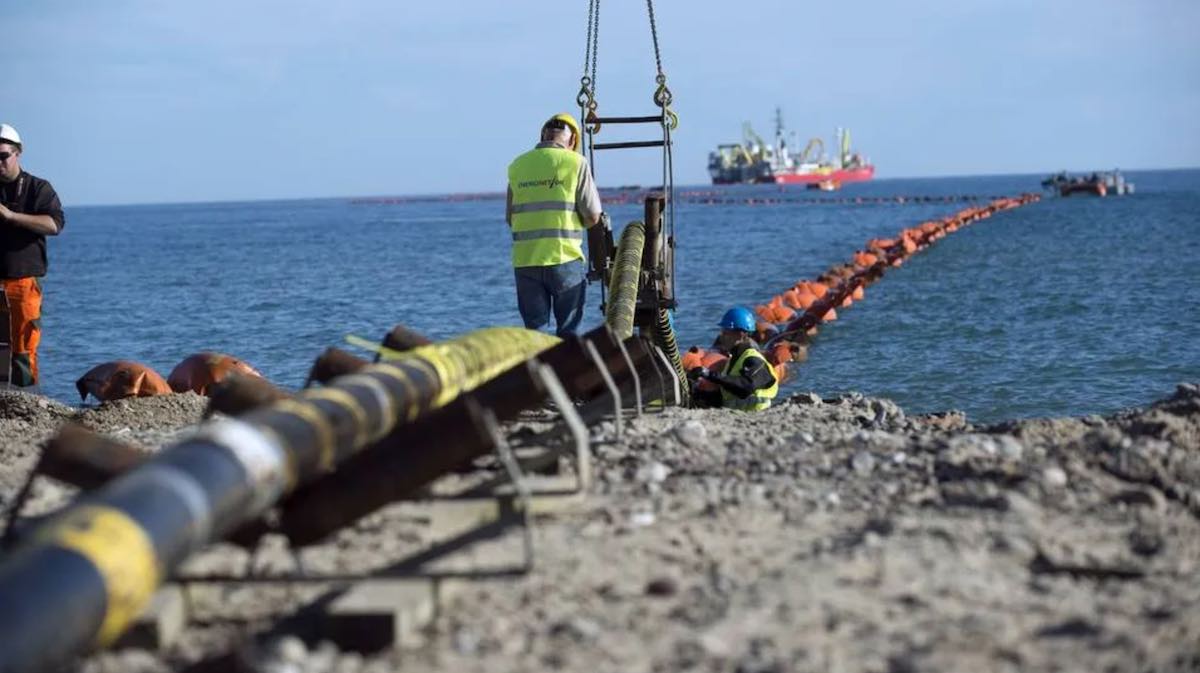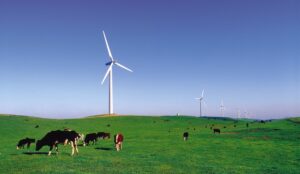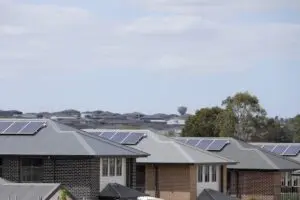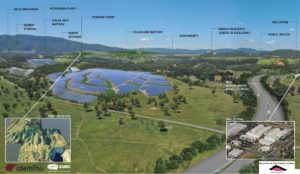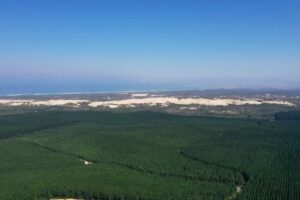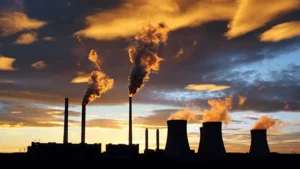When we talk about the clean energy transition, we talk a lot about the role of solar, storage and batteries.
Something we don’t talk about as much is the silent evolution of high voltage direct current (HVDC) cables. They link electricity generation to where the power is needed – cities, regions, homes, industrial centres and so on.
In the case of renewables, they are pivotal to take the renewable energy supply – generated from wind and solar – to grid networks and onto the consumer.
In so many ways, electricity networks are the backbone of the transition, and HVDC cables provide a critical part – connecting grids and exporting electricity across borders.
However, the slow development of grid networks is putting our climate goals at risk; the energy transition may indeed be hampered by our ability to develop electricity grids at scale and at the speed we need to meet net zero targets.
HVDC cables have existed since the early 1900s. The technology is evolutionary and over time crucial advances driven by demand and innovation have unlocked the potential of electricity markets on a global scale.
The result is that electricity can be continuously transmitted at greater distances, enabling energy trading to support the transition away from carbon intensive energy sources, to renewable sources including wind and solar.
Europe and the UK are the home of HVDC cables – in terms of operation and technological innovation. There are more than 30 subsea HVDC cable projects in operation, together spanning some 8,000 kilometres, and another 50 projects planned or under construction.
For example, Europe houses the longest subsea cable – the North Sea Link which runs 720km between Norway and the UK; the deepest cable – the SA.PE.I. between Sardinia and mainland Italy, which is 1,640 metres below sea level, and; the first subsea cable, completed in 1954, the Gotland High Voltage Direct Current Link between the Island of Gotland and mainland Sweden.
Tier one HVDC cable manufacturers are located in Europe, including Prysmian (Italy), NKT (Sweden) and Nexans (France), as well as new entrants including XLCC, establishing two manufacturing facilities in the UK.
The opportunity to use grid technology is evident from the European Synchronous Grid that connects some 400 million consumers across 24 countries – making it the largest synchronous electrical grid in the world. These cables securely transmit energy from locations that have a surplus of supply to those with unmet demand.
This infrastructure was put to the test at the beginning of the Russia-Ukraine crisis, when the planned connection of Ukraine to Europe’s grid was brought forward urgently.
Within a few weeks of the invasion, Ukraine was connected – in what the European Union Commissioner for Energy, Kadri Simson said was “a year’s work in two weeks.” A testimony to the maturity of the technology, and the importance of building such energy infrastructure.
Despite this industry’s maturity and established foothold in Europe, the proliferation of grid interconnection, enabled by HVDC cables, is only just beginning.
Considering that HVDC cables are required to link offshore wind farms to onshore infrastructure, these cable systems will play an even greater role in the global transition.
Indeed, the planet’s increasingly urgent and deeply connected environmental and economic needs dictate that harnessing HVDC and grid technology is an absolute requirement to meet net zero needs.
In the coming years, this evolutionary technology needs to connect continents, countries and a shared greener grid infrastructure, particularly pertinent for the energy transition in the Indo-Pacific region across its 38 countries.
In order to achieve this, the development of electricity grids must be supported by strong and cohesive international policy frameworks, inter-government agreements and the support of public and private sector capital.
To inform this industry’s development, it is worth casting our mind to the evolution of the global telecommunications network, which provides an insightful technical, commercial, policy and regulatory roadmap.
Our ocean’s floors are already home to over one million kilometres of subsea telecommunications cables as part of an infrastructure that has grown over a century or more.
Submerged at depths of up to 8,000 metres, subsea fibre optic cable systems are unseen yet vital to the world economy. They are the enabler of our communications and information flow – the internet, text, emails, social media connectivity – supporting it all.
As testimony to the capability of this subsea cable infrastructure, just take a look at the spaghetti bowl of fibre optic cables operating in the Indo-Pacific region.
For example, there is the SEA-US cable system, linking Indonesia, the Philippines, Guam and the United States including Hawaii and Los Angeles. The SEA-US system is 15,000km in length and was planned and engineered to bypass areas in Asia that are prone to earthquakes and seismic shifts enabling stable connectivity.
Further to that, Vocus has just announced the Darwin, Jakarta, Indonesia cable system, operational as of only a few weeks ago. Strategically relevant cables such as Digicel and the Coral Sea Cable, are just a few of the operational cables in the Pacific Islands, with more slated in the near future.
Many often cite the issues related to security of supply, when considering the issue of electricity provided through subsea cable systems. And while this is a very important issue, and requires another article in and of itself, it is certainly insightful to consider how many fibre optic cables have been operational for decades, with limited disruption from natural events or bad actors.
Hindsight shows that today’s vital fibre optic cables only proliferated when governments put in place international legal frameworks to resolve issues of transit rights, cable protection, freedom to lay cables and the right to send traffic through international networks.
At present, intergovernmental cooperation on fibre optic cable project development includes the UNESCAP Asia-Pacific Information Super Highway (AP-IS). Established in 2016, the UN-led region-wide intergovernmental platform is an initiative which seeks to identify and bridge gaps in the largely subsea fibre optic cable networks that form the backbone of Asia-Pacific’s internet infrastructure.
Cross-border HVDC projects – especially those intended to facilitate trade in renewable electricity and resulting global decarbonisation – will similarly flourish with government cooperation on areas such as grid harmonisation, renewable energy certificates and carbon accounting.
Such initiatives reflect the understanding that commercially led projects rely on international regulatory and policy actions that are within the remit of governments to implement, without which the building of existing telecommunications infrastructure would not have been possible. The HVDC sector needs a similar approach, and quickly.
There are compelling reasons to move with speed and at scale. Energy, like telecommunications and the internet, is a vital public commodity directly correlated to economic inclusiveness and growth.
Large, interconnected power systems will play an important role in the decarbonisation of industries and economies, providing access to cleaner sources of renewable energy.
As the global power system becomes increasingly dependent on cross-border transmission, HVDC links will correspondingly increase in importance to global energy supply and security.
That can happen right here in our Asia Pacific region. One of the very first fibre optic cables, and indeed the first communication link between Australia and Europe, commenced in Adelaide and ran through Powell Creek in the Northern Territory to land in London. The cable is more than 20,000km long – half the circumference of the earth – and nearly 15,000km of it beneath the ocean.
Setting up the technical and regulatory dimensions of cross-border energy trading is more complex than in the case of fibre optic links, due to an array of standards and generation capacities as well as uneven demand across economies.
The relative complexity makes it all the more necessary for governments to work together to enable the growth of an industry that is likely to prove as strategically important as the telecommunications one it follows.
Georgie Skipper is a founding member of the Green Grids Initiative (GGI) and GGI Asia Pacific Working Group. She is a Visiting Scholar and International Faculty Fellow at MIT Sloan School of Management in Cambridge, Massachusetts. Georgie was the Senior Adviser to the Foreign Minister of Australia from 2013-2018.

